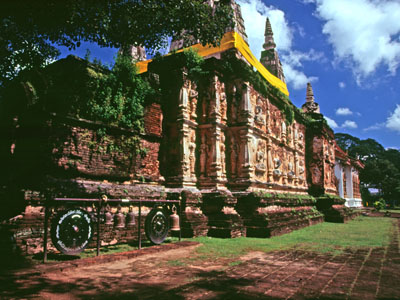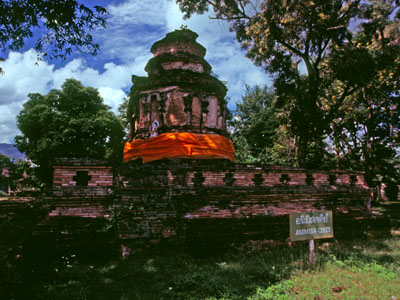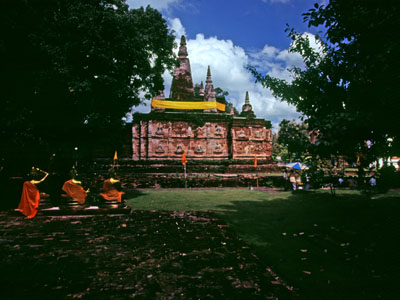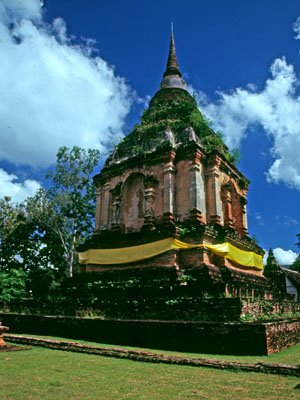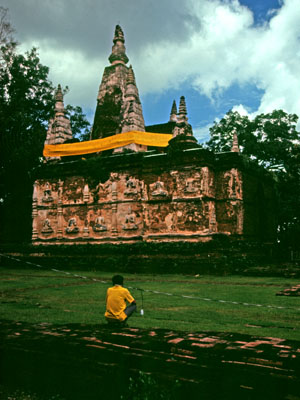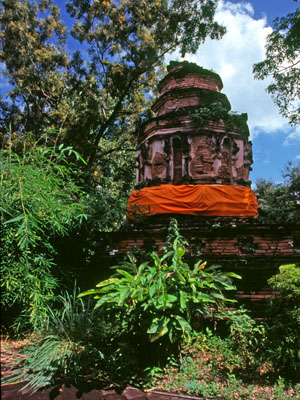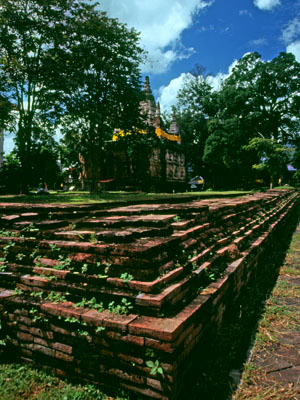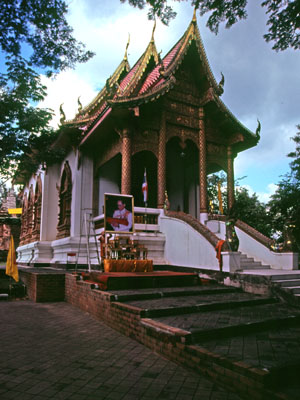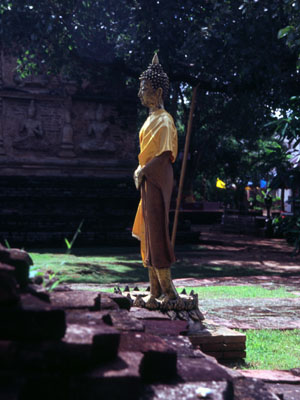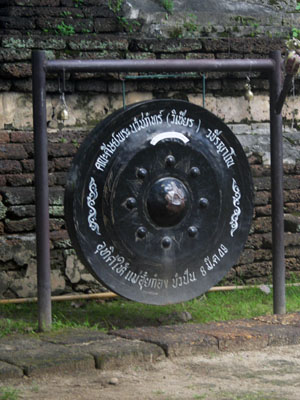From my skewed architectural and historical perspective, Wat Chedi Jed Yot is one of the most interesting temples that we visited. It was built by King Tilokarat in 1453 and was host to eighth World Buddhist Council in 1477. The term Jed Yot, (Jet Yot - with a "t" depending on what you are reading), means "seven peaks", referring to the seven spires of the main structure. This design is unique in Thailand because it was inspired by a temple in Buddhagaya, India. Few tourists actually make it out here. The solitude, pastoral setting and slow decay of the structures add to the temple's charm.
One of my favorite sites about Thailand thailandforvisitors.com
All photos on this page are originals by & copyrighted by Daren Willden, unless otherwise stated. All rights reserved.
